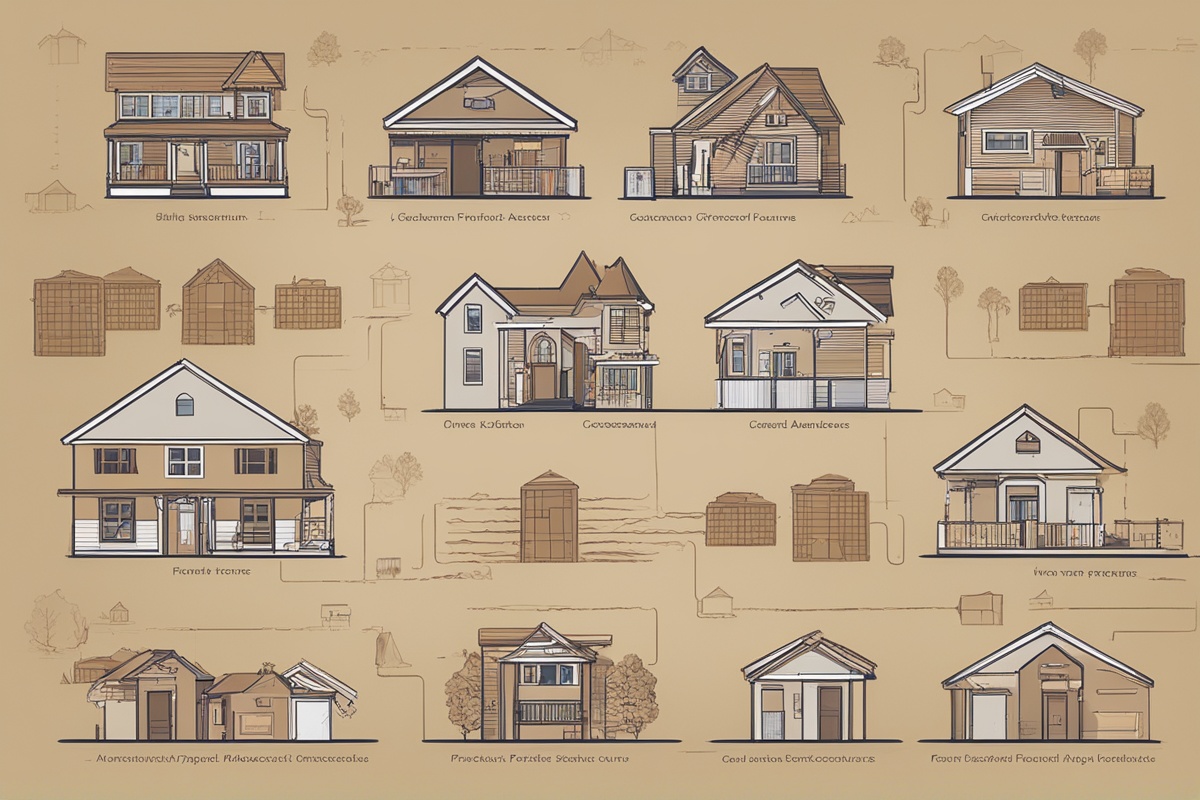Foreclosure is a daunting process for many homeowners, often signaling financial distress and the potential loss of a home. However, not all foreclosures are the same. By understanding different foreclosure processes, homeowners can better navigate their options and potentially mitigate the impact. This comprehensive guide explores the various types of foreclosure processes, shedding light on their unique characteristics, legal implications, and timelines. Whether you’re a homeowner facing financial challenges or simply seeking to expand your knowledge, this post will provide clarity on the complex world of foreclosures.
What Is Foreclosure and Why Does It Matter?
Foreclosure is a legal process through which a lender attempts to recover the balance of a loan from a borrower who has stopped making payments by forcing the sale of the asset used as collateral, typically a home. Understanding different foreclosure processes is crucial because each type has distinct rules, timelines, and opportunities for homeowners to intervene. Whether you’re at risk of losing your home or assisting someone in distress, knowing the specifics of foreclosure can make a significant difference in outcomes. Foreclosure not only affects credit scores and financial stability but also carries emotional and social consequences, making education on this topic vital.
Judicial Foreclosure: A Court-Supervised Process
Judicial foreclosure is one of the most common types of foreclosure processes, particularly in states where court oversight is required. In this process, the lender must file a lawsuit against the borrower to obtain a court order to foreclose on the property. This type of foreclosure often takes longer due to the legal proceedings involved, sometimes spanning several months to over a year. Homeowners may have more opportunities to contest the foreclosure or negotiate alternatives like loan modifications during this time. Understanding different foreclosure processes, such as judicial foreclosure, helps homeowners in states like Florida or New York prepare for the legal steps and timelines they might face. For more on navigating financial distress, check out our guide on options during financial hardship.
Non-Judicial Foreclosure: A Faster, Lender-Led Approach
Non-judicial foreclosure, also known as a power of sale foreclosure, occurs without court intervention and is typically faster than judicial foreclosure. This process is common in states like California and Texas, where the deed of trust allows the lender to sell the property directly after following specific state-mandated procedures, such as providing notice to the borrower. While this method is quicker—often taking just a few months—it offers fewer opportunities for homeowners to challenge the foreclosure. Understanding different foreclosure processes, including non-judicial foreclosure, is essential for homeowners in these states to act swiftly if they wish to save their property. Learn more about protecting your home with our post on strategies to avoid foreclosure.
Strict Foreclosure: A Rare but Direct Process
Strict foreclosure is a less common type of foreclosure process, used in only a few states like Connecticut and Vermont. In this process, the lender petitions the court to transfer ownership of the property directly to them if the borrower fails to pay the debt within a specified period. Unlike other foreclosure types, there is no public sale of the property. This method can be particularly harsh for homeowners, as it offers little chance to recover equity or redeem the property. By understanding different foreclosure processes like strict foreclosure, homeowners in applicable states can better grasp the severity and limited options associated with this method.
Pre-Foreclosure and Short Sales: Alternatives to Full Foreclosure
Pre-foreclosure refers to the period after a homeowner defaults on their mortgage but before the property is officially foreclosed upon. During this stage, homeowners may have the opportunity to sell the property through a short sale, where the lender agrees to accept less than the owed amount to avoid the full foreclosure process. This option can help mitigate damage to credit scores and provide a more dignified exit from homeownership. Understanding different foreclosure processes, including pre-foreclosure and short sales, empowers homeowners to explore alternatives that could prevent a complete loss. For additional insights, read our detailed article on short sale versus foreclosure.
Factors Influencing Foreclosure Processes by State
One of the most critical aspects of understanding different foreclosure processes is recognizing that they vary significantly by state. Some states require judicial foreclosure, while others permit non-judicial processes. Additionally, redemption periods—times during which a homeowner can reclaim their property after foreclosure—differ widely. For instance, in Minnesota, homeowners may have up to 12 months to redeem their property, while other states offer no redemption period at all. Knowing the specific laws and timelines in your state is essential for navigating foreclosure effectively. To better understand state-specific rules, explore our resource on state foreclosure laws.
Disclaimer: The information provided in this article is for general informational purposes only and does not constitute legal or financial advice. Foreclosure laws and processes vary by state and individual circumstances, so it is recommended to consult with a qualified attorney or financial advisor for personalized guidance. The authors and publishers of this content are not responsible for any decisions or actions taken based on the information provided.
References
- U.S. Department of Housing and Urban Development (HUD) – Avoiding Foreclosure
- Consumer Financial Protection Bureau (CFPB) – What is Foreclosure?
- Nolo – Understanding the Foreclosure Process
- Federal Reserve – Foreclosure Resources
- American Bar Association – Foreclosure Basics
This content is for informational purposes only and not a substitute for professional advice.





